Important Notice
For the latest on flights and Hurricane Irma, please check with your airline. We also encourage you to follow us on Twitter for updates.
The Modernization In Action Plan
Pardon our progress as MIA gets

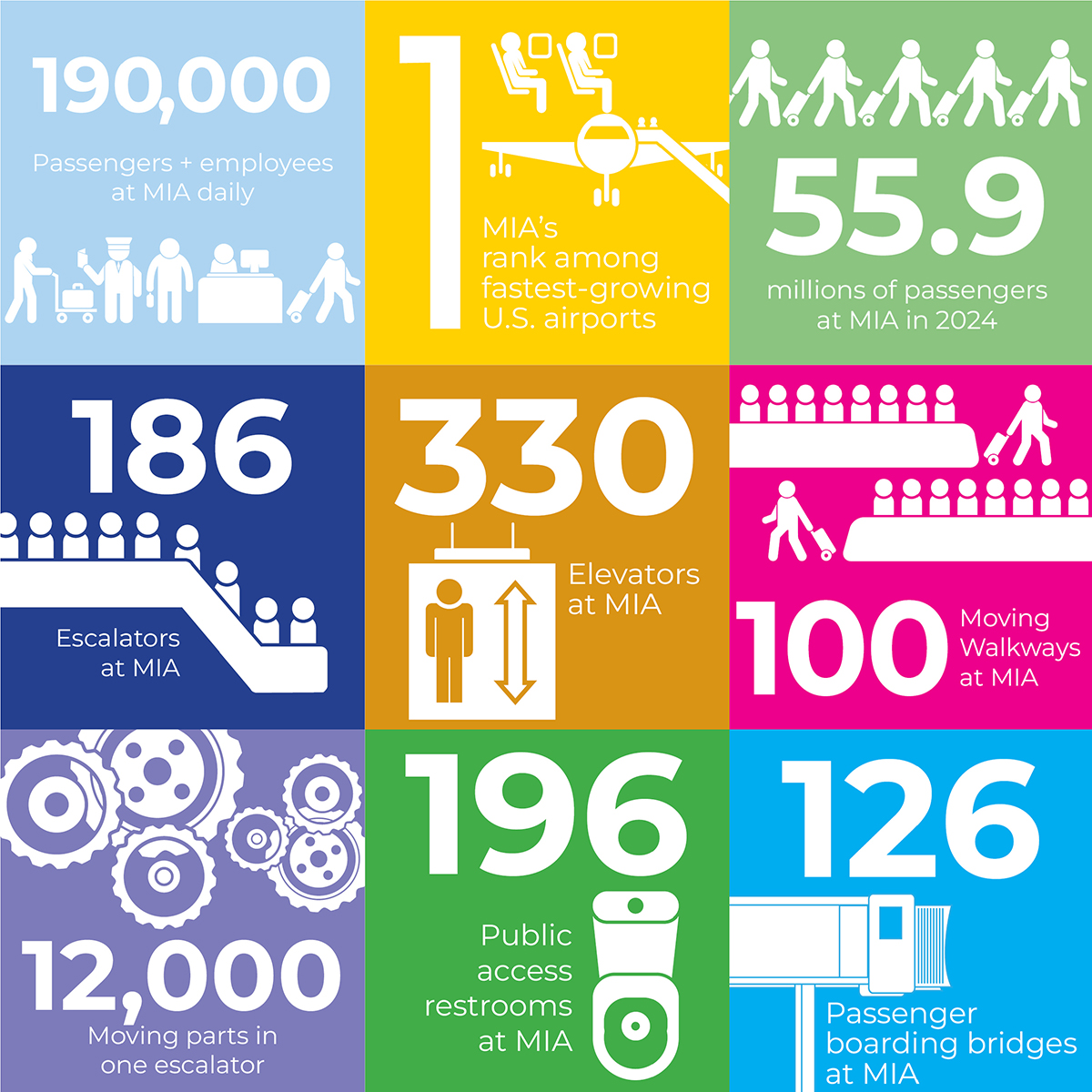
Miami International Airport soared to unprecedented heights in 2024, marking a historic year of accomplishments in passenger and cargo traffic, as well as substantial investments in maintenance and capital improvements. MIA achieved its highest-ever annual passenger total, handling 55.9 million travelers in 2024, for an impressive 7% increase over the previous year's record.
MIA has been welcoming these record numbers on a 24/7 basis while simultaneously working to modernize each touchpoint along the passenger journey airport-wide, from the airplane cabin to the airport curb.
Through the Modernization in Action (M.I.A.) Plan, 126 passenger boarding bridges, 196 public bathrooms, and 600+ conveyance units (elevators, escalators, and moving walkways) are being renovated in phases over the next 5-7 years.
Aging areas require being out of service for up to a year for renovations or repairs. Out of MIA’s 330 elevators, 186 escalators, and 100 moving walkways, less than 10% are out of service for maintenance on an average day, but we know that may still disrupt your travel journey and we apologize for any inconvenience.
Under the leadership and guidance of Mayor Daniella Levine Cava, we are working diligently and ask that airport patrons please pardon our progress while we get MIA Future-Ready to keep you connected with more than 170 destinations across the world.
We appreciate your patience while the M.I.A. Plan makes traveling through MIA easier than ever before. Learn more about each project in the tabs below.
MIA’s Future-Ready Modernization in Action (M.I.A.) Plan is well underway to rebuild, replace, and proactively maintain the 616 elevators, escalators, and moving walkways at MIA. More than 50 units have been fully modernized, and more than 200 are scheduled for replacement by 2030. As a result, more than 94% of all conveyance units are now operational.
After customized replacement parts are fabricated with precision detail, a full conveyance modernization typically takes 16-20 weeks and requires specialized heavy equipment to remove and install parts. A modernized 40-step escalator, for example, is comprised of 12,000 moving parts.
Delays can occur due to supply chain issues or parts no longer being manufactured, which means that some units must be redesigned and rebuilt from scratch. Routine maintenance and inspections also temporarily take units out of service. The modernization program is expected to continue until all outdated units are upgraded.
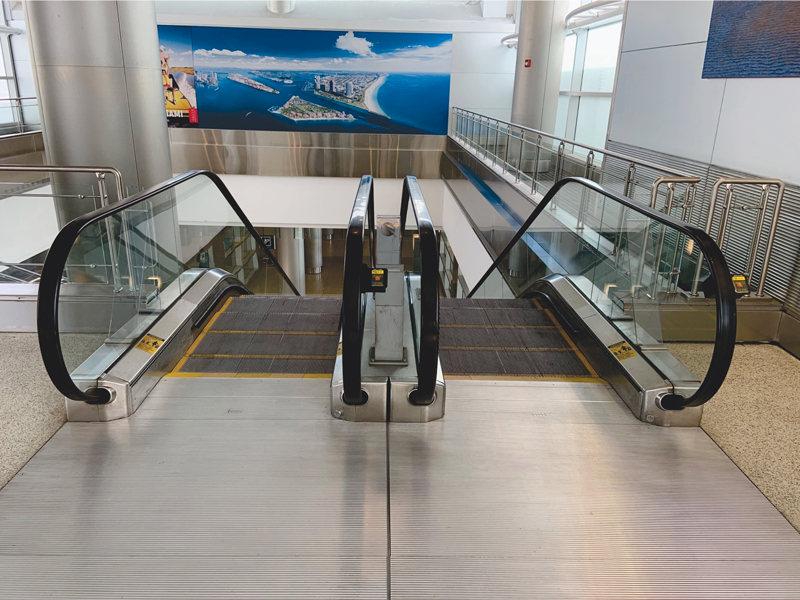
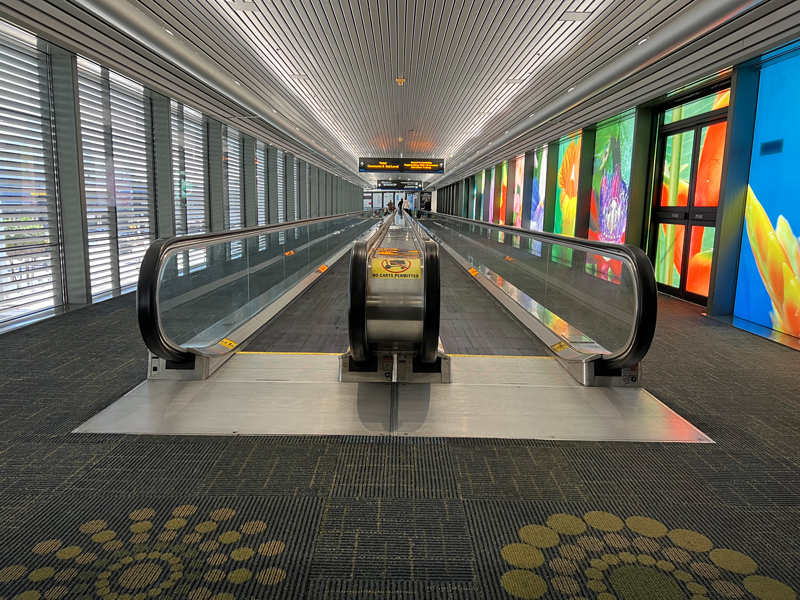
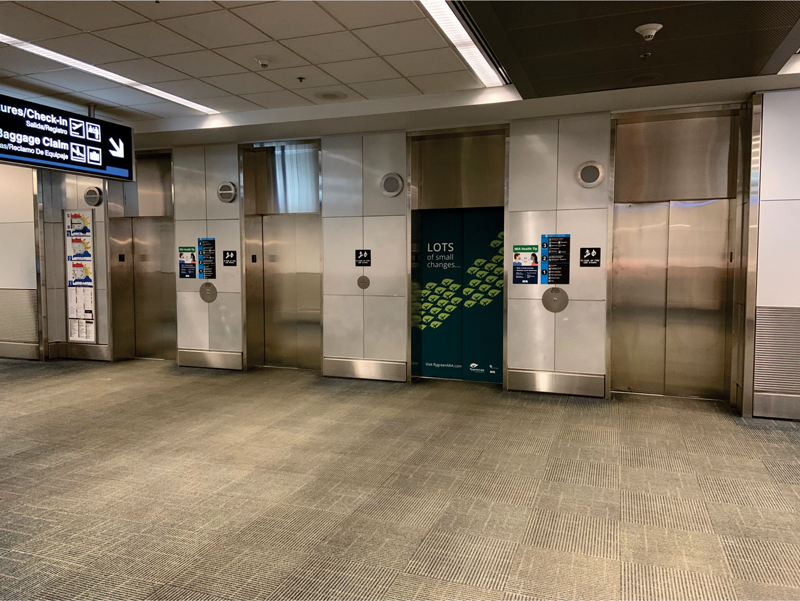
What’s the first place most of us go to after a long flight? You guessed it – the bathroom. MIA’s restroom modernization project includes the renovation of 196 public access restrooms located on all three levels of MIA’s terminal and concourses. As of August 2025, 44 restrooms have been modernized.
Renovations include interior demolition, new partition walls, new toilet partitions, new restroom finishes including flooring, walls, ceiling, new vanity countertops, new plumbing fixtures, new accessories, and new lighting fixtures.
Phase 1, which included 10 public restrooms in Concourse H, was completed in Winter 2023.
Phase 2, which includes 22 restrooms in Concourse D, 12 restrooms in Concourses E, F, and G, and 16 public restrooms in Concourses H and J, is scheduled for completion by Fall 2026.
Phase 3, which includes the remaining bathrooms across the MIA terminal, is scheduled for completion in stages over the next six years.
Project Benefits:
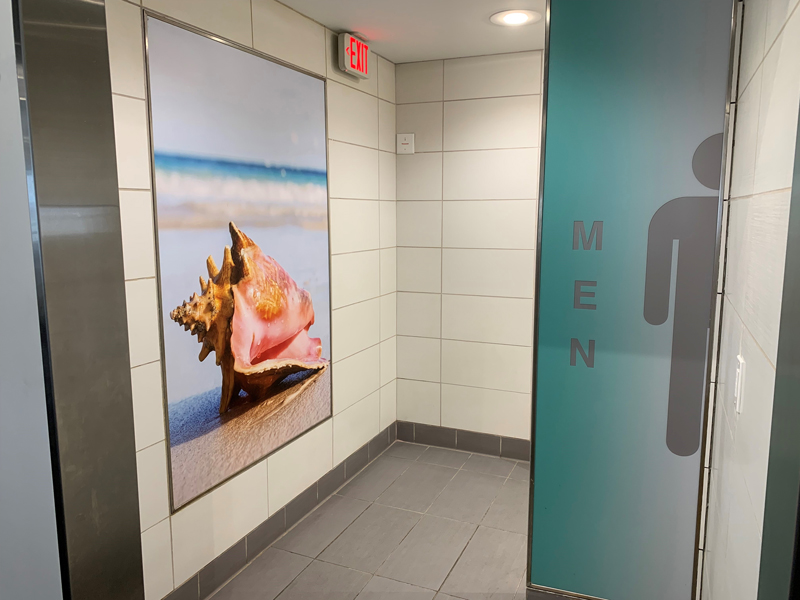
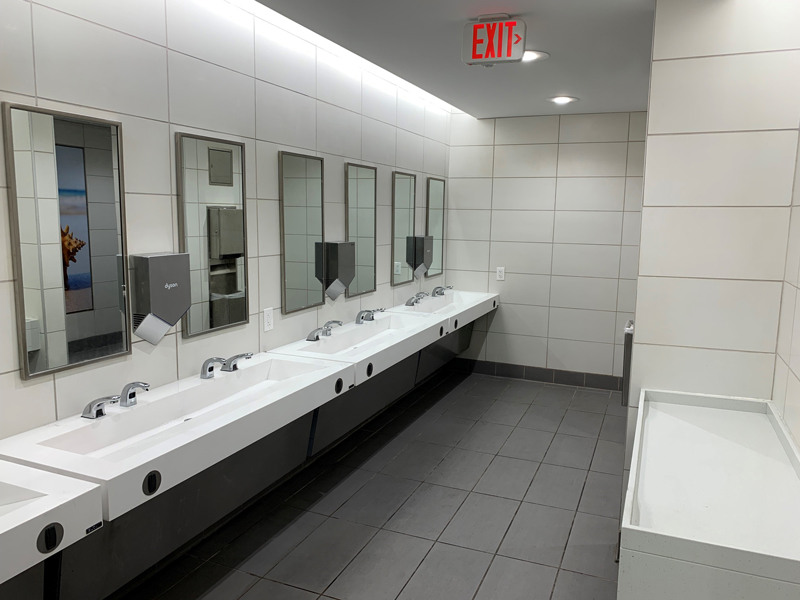
Under the leadership of Miami-Dade County Mayor Daniella Levine Cava and with the support of the Board of County Commissioners, Miami International Airport’s $9 billion Modernization in Action (M.I.A.) maintenance and capital improvement program is on schedule to completely transform the global hub over the next 10 years. Renovation and expansion projects in the M.I.A. Plan are paving the way for the airport to welcome more than 77 million travelers and four million tons of freight by the year 2040.
The comprehensive future-ready program is designed to modernize every passenger touchpoint from the cabin to the curb and beyond through unprecedented investments, including a total redevelopment of the Central Terminal between concourses E and G, a new Concourse K that expands the South Terminal, renovated Concourse D gates to serve larger aircraft and more flights, a new four-star hotel with a business center and conference space, and upgrades to all of the airport’s elevators, escalators, moving walkways, and bathrooms.
Public Notice: MIA Concourse K Floodplain Notice
Click images below to view terminal, airside, general aviation, and other project information.
A passenger's first step from the airplane to the airport is onto a passenger boarding bridge (PBB). MIA is improving that first impression by replacing or refurbishing all its 126 passenger boarding bridges. The first 32 bridges, including two glass bridges, have been installed. Another ten are pending solicitation. By 2028, 94 of MIA’s 126 bridges will be replaced.
This project also includes the design, fabrication, transportation, and installation of pre-conditioned air units, baggage chutes, and ground support equipment for each boarding bridge.
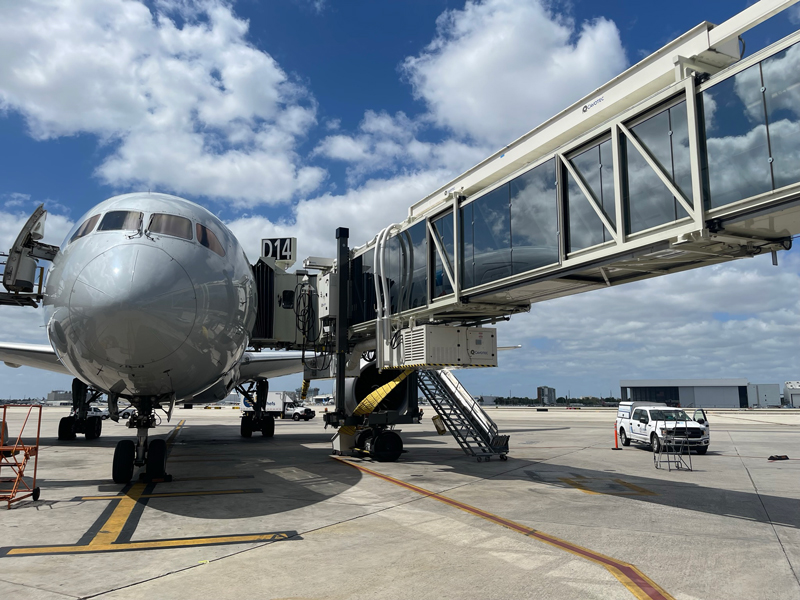
Project Title: Parking Guidance System
Project Timeline:
Project Summary:
Project Benefits:
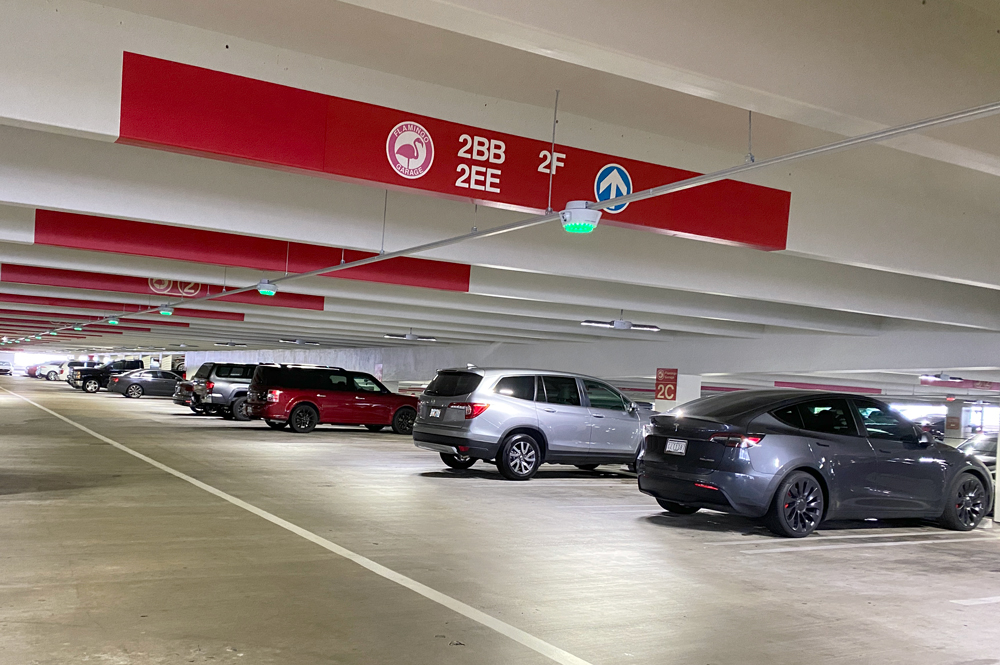
Project Title: Perimeter Fence Security Enhancement
Project Timeline:
Project Summary:
Installed 18” diameter stainless steel razor wire coil assemblies on top of the existing 10.95-mile-long perimeter fence, with “V” type connectors and six new lines of barbed wire.
Project Benefits:
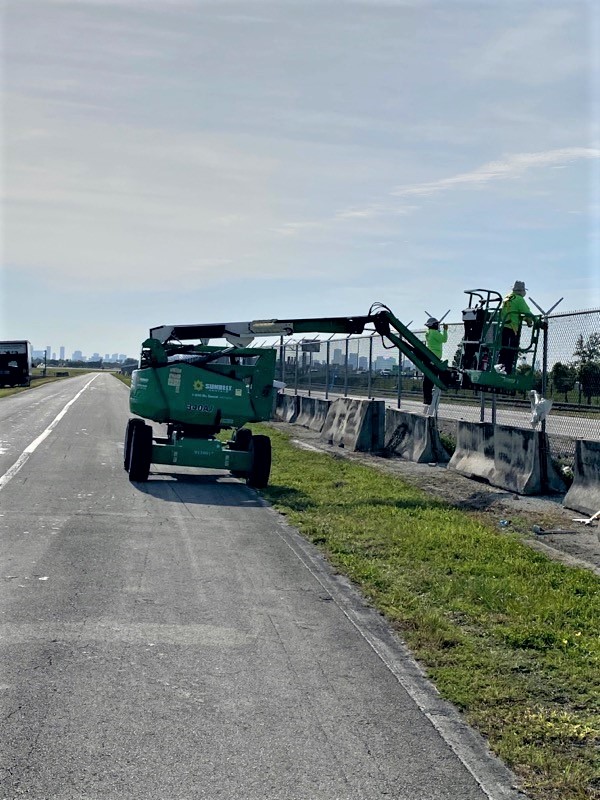
Project Title: Perimeter Intrusion Detection System (PIDS)
Project Timeline:
Project Summary:
Project Benefits:
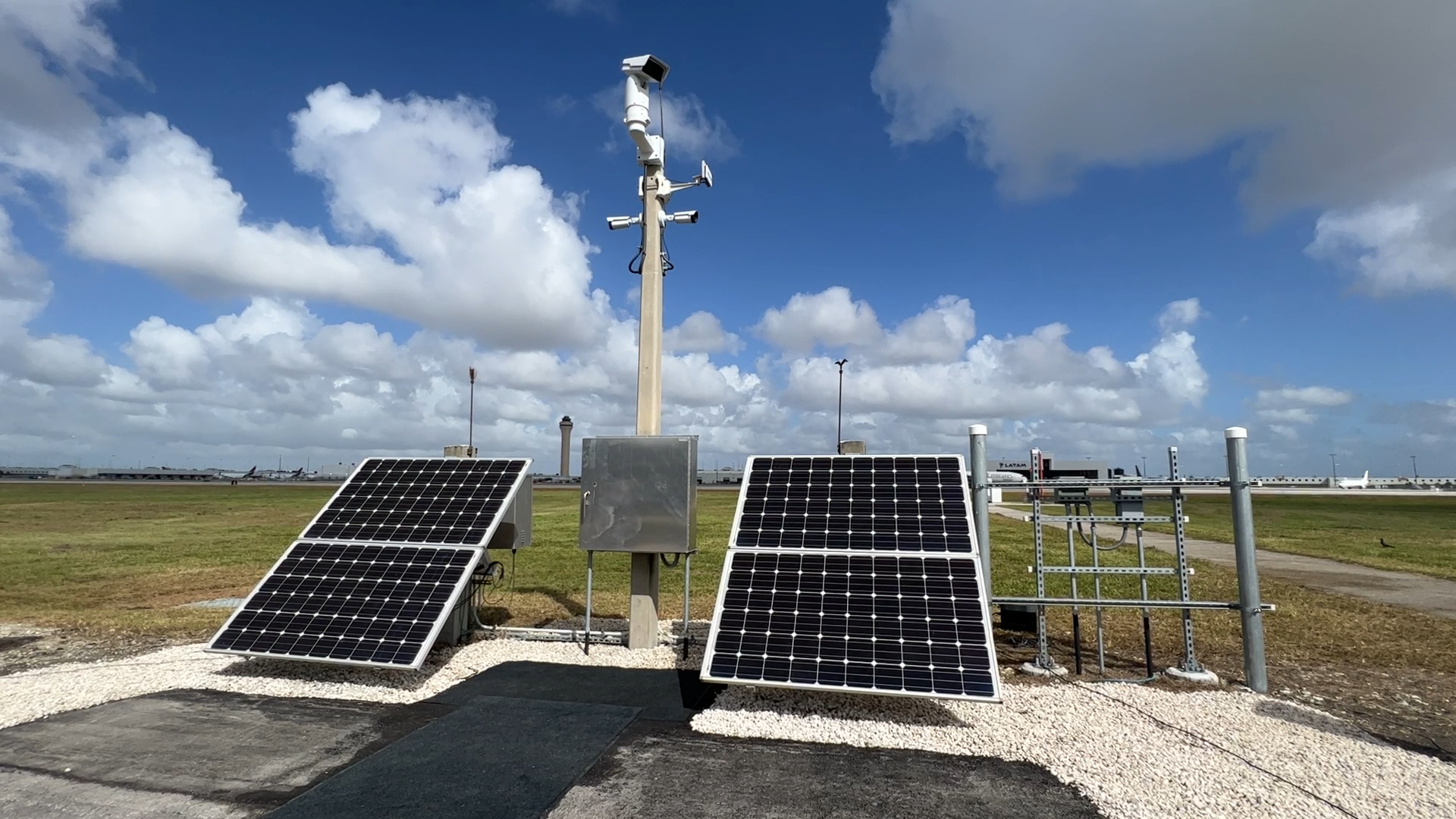
Title: Digital Signage at D-60 Gates
Project Timeline:
Project Summary:
Installation of 13 new digital displays in Concourse D, post-security, at D-60 gates. The new dynamic signs display each gate's number, destination, and flight number. The new displays replaced multiple static ones, which required manual relocation for each flight operation.
Project Benefits: